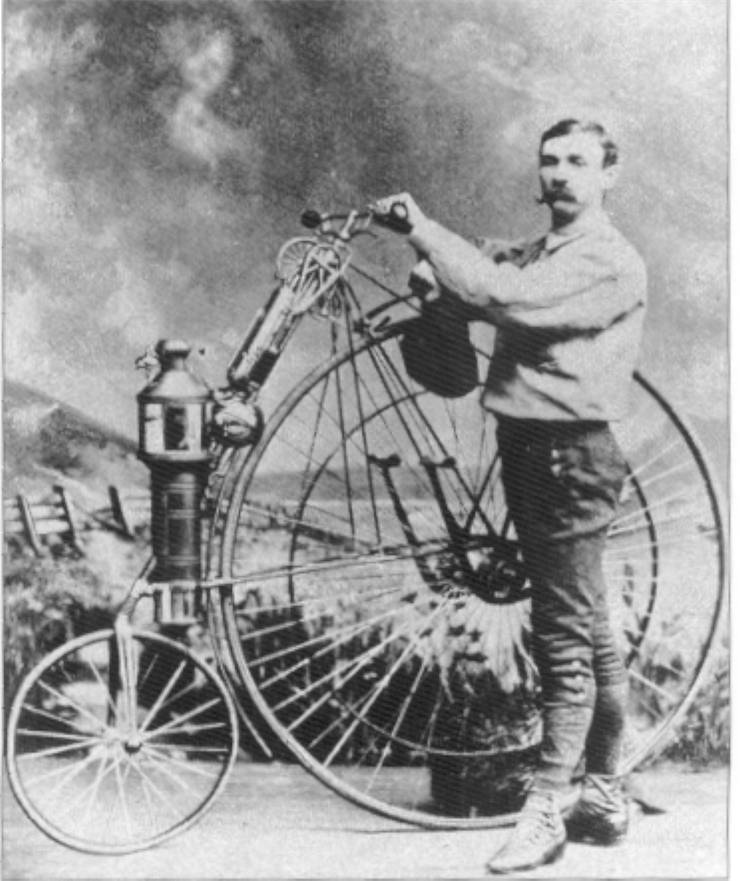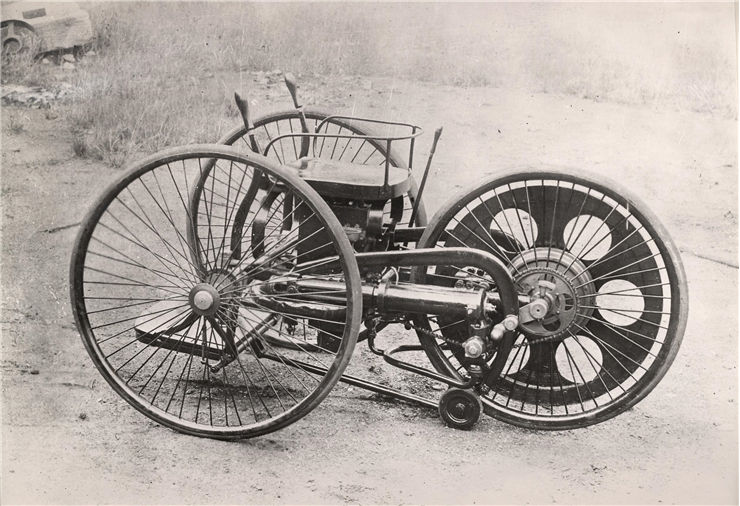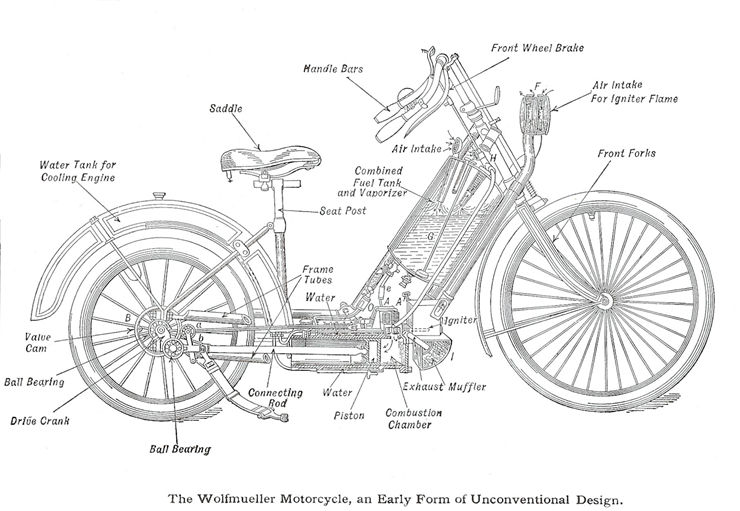History of Motorcycles
With the invention of steam engines and bicycles, 19th century scientists quickly realized that combining of these two technologies could substantially improve transport on public roads.
First wave of motorized bicycles started appearing only few short years after the premiere of Pierre Michaux famous bicycle pedal bike and lasted to mid-1880s. Pierre Michaux’s son Ernest made the first motorcycle in his Paris factory by combining small steam engine to one of their early “boneshaker” bicycle designs. That product kick-started the production of many other models, with several other inventors performed similar feat using various types of steam engines (Sylvester H. Roper used coal burn furnace in 1868, Louis-Guillaume Perreaux used alcohol burner chamber in 1871, Lucius Copeland attached steam engine to English “farthing-penny” high wheel bicycle in 1881).
True revolution in motorcycle technology happened in 1885, when two German inventors Gottlieb Daimler and Wilhelm Maybach managed to produce first motorcycle with a gasoline internal combustion engine. This machine called “Daimler Reitwagen” (riding wagon) is today known as a first example of modern motorcycle that we know and use today. Since its appearance, many other inventors and engineers began making their own versions of engine-equipped bicycle.
Ten years after the premiere of “daimler reitwagen”, German manufacturer Hildebrand & Wolfmüller” started the first motorcycle mass production factory. Their initial business did not manage to stay alive for very long but new safety features and increase of popular demand resulted in great motorcycle expansion during first years of 20th century. Several major manufacturing companies started making their own motorcycle designs, most notably English Royal Enfield, Triumph, American Harley-Davidson, Indian Motorcycle Manufacturing Company and DKW (which held the record for being the largest motorcycle production factory before the World War II).
After the Second World War, lower costs, increased engineering improvements and better road networks insured the widespread success of motorcycle all across the world. Motorcycles became one of the primary source of transport in Asia (especially in big cities) and American “motorbike club” movement (combined with their portrayals in 50s and 60s films) ignited the imagination of entire world population. During 1960s, dominance of American and English manufacturers began to fade with the emergence of several Japanese brands - Suzuki, Kawasaki and the Yamaha. They focused their production to smaller, cheaper and more efficient motorcycle designs, which helped them to secure majority of worlds market.
One of the most popular motorcycle models of all time is “Honda Super Cub”, which was sold in over 60 million units. Their dominance lasted to 1990s when several American and European manufacturers managed to reclaim large parts of world market (today’s most popular western brands include names such as BMW, Ducati, Victory and Harley-Davidson).
Today, motorcycles represent one of the most affordable forms of motorized transport on public roads. Daily over 200 million motorcycles are in use all around the world (together with over 590 million cars). Leading countries with greatest motorcycle use are India (37 million motorcycles/mopeds) and China (34 million motorcycles/mopeds).


